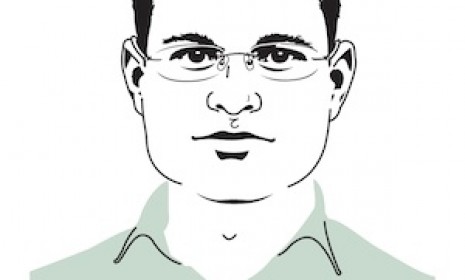The secret labs where America's most futuristic weapons are built
These days, conflicts aren't necessarily fought by gun-wielding soldiers, but instead by stealthy computer viruses and complex code-breaking computers


By the close of 2008, thanks to a combination of human intelligence, satellite surveillance, and drone imagery, we had a good idea that centrifuges at Iran's Natanz facility were spinning out purified uranium — and we knew that an airstrike would either fail or escalate into a war that the world wasn't ready for. The choices, it seemed, were a full-scale war, or an Iranian nuclear missile.
But as it turned out, there was another option. President Bush ordered the National Security Agency to launch operation OLYMPIC GAMES, an unprecedented, sustained cyber attack against Natanz that ultimately destroyed one-fifth of its centrifuges. The details of the program, jointly developed with Israel, and escalated by President Obama, are now well known, and have sparked a national debate on the intelligence community's collapsing cone of silence. But there's another question worth exploring: Where do such technologies come from? Where was the stealth helicopter used in the bin Laden raid built? Where are these secret laboratories of scientists developing the quiet weapons of the shadow war?
Stuxnet and Flame, two of the key covert computer viruses used in OLYMPIC GAMES, were likely developed at Ft. Meade, Md. At NSA headquarters, computer scientists successfully weaponized C++ and established the battlefield of the future. To test the cyber weapon, perfect replicas of Iran's centrifuges were built at the Negev Nuclear Research Center in Dimona, Israel, and when Stuxnet proved battle effective, it was deployed. The viruses seem to have set back Iran's nuclear program by several years.
The Week
Escape your echo chamber. Get the facts behind the news, plus analysis from multiple perspectives.

Sign up for The Week's Free Newsletters
From our morning news briefing to a weekly Good News Newsletter, get the best of The Week delivered directly to your inbox.
From our morning news briefing to a weekly Good News Newsletter, get the best of The Week delivered directly to your inbox.
Some speculate that a massive in-progress computer could break PGP, an encryption system with no known vulnerabilities.
And appearances can be deceiving. Over at Joint Base Langley Eustis in Virginia, the blandly named Technology Applications Program Office is officailly responsible for rapidly procuring and integrating "non-developmental item equipment and systems for Army Special Operations Aviation." Despite its harmless name and seemingly prosaic mission, this office is actually a highly secretive special mission unit belonging to the U.S. Joint Special Operations Command. The unit builds some of the most sophisticated tagging and tracking equipment in the world, as well as the sensitive signals intelligence equipment that gets bolted onto military spy planes. More famously, alongside the Integrated Aviation Systems 21 Working Group and under the U.S. Army Aviation Research, Development and Engineering Center, engineers at Joint Base Langley Eustis created the stealth Black Hawks used on the bin Laden raid. (After construction, the helicopters were transported to Area 51, of all places, for testing by the pilots of JSOC's Aviation Tactics and Evaluation Group.)
I've written before of the Special Collection Service — America's elite signals intelligence operatives — and the mad scientist's laboratory at their former headquarters in College Park, Md. In his memoir, Mike Frost, a former director of the Communication Security Establishment Canada, described it in some detail: "Wires everywhere, jerry-rigged gizmos everywhere, computers all over the place, some people buzzing around in three-piece suits, and others in jeans and T-shirts. [It was] the ultimate testing and engineering centre for any espionage equipment." He explained that at the test facility, newly constructed devices are put through the paces in rooms filled with equipment designed to simulate the electronic infrastructures of foreign target cities.
Perhaps the most interesting laboratory in the world is still under construction, and belongs (not surprisingly) to the National Security Agency. Like most secret facilities, it has a banal, utterly forgettable name: The Utah Data Center. Its mission, however, is anything but boring. Located deep in the Utah desert, the $2 billion data collection facility will consume a staggering 65 megawatts to maintain operations. (For comparison: The Hadron Super Collider is designed to figure out the origin of the universe, and only peaks at 120 megawatts.) So what kind of science is going on in the Utah desert? What some consider the holy grail of technology — a massive quantum computer codenamed Vesuvius, which can calculate 100,000,000,000,000,000,000,000,000,000,000,000,000 computations at once. Some speculate that such raw computational power could break PGP, an encryption system with no known vulnerabilities. To understand the implications: Theoretically, PGP could be bombarded with keys and ultimately penetrated. But even under the best, nonexistent, and likely impossible conditions, this would require constant bombardment for 10 trillion years. As has been pointed out, that comes out roughly to "a thousand times the age of the known universe." Still, if the Utah Data Center really could tear through PGP, it truly would be the "hydrogen bomb of cybersecurity."
A free daily email with the biggest news stories of the day – and the best features from TheWeek.com
Of course, it should be no surprise that weapons of war and futuristic code-breaking computers would originate at military bases and secret government buildings. But how about this one: Eight miles away from Facebook's headquarters in Menlo Park, Calif., is In-Q-Tel — one of the Central Intelligence Agency's most important investment firms. The CIA Office of Technical Services in Langley is responsible for developing the James Bond-like gadgets used in the field. But companies like In-Q-Tel are able to work with the private technology industry and help fund startups that might build the weapons and spy gear of tomorrow. While the intelligence community has secretive laboratories scattered across the country, it's perhaps jarring to imagine spymasters and Google developers talking shop over lunch.
In some ways, it's reassuring to know that such laboratories exist to protect us. But as has been the case since the birth of the American intelligence complex, there could come a time when these weapons of espionage may be turned on the American people. And more than ever before, when that day comes, it will be a dark one indeed.
David W. Brown is coauthor of Deep State (John Wiley & Sons, 2013) and The Command (Wiley, 2012). He is a regular contributor to TheWeek.com, Vox, The Atlantic, and mental_floss. He can be found online here.
-
 The truth about vitamin supplements
The truth about vitamin supplementsThe Explainer UK industry worth £559 million but scientific evidence of health benefits is ‘complicated’
-
 Is convenience culture killing community?
Is convenience culture killing community?In The Spotlight A decline in emotional intelligence could be responsible for a diminished sense of belonging
-
 The week’s best photos
The week’s best photosIn Pictures A new year dawns, a volcano yawns, and more
